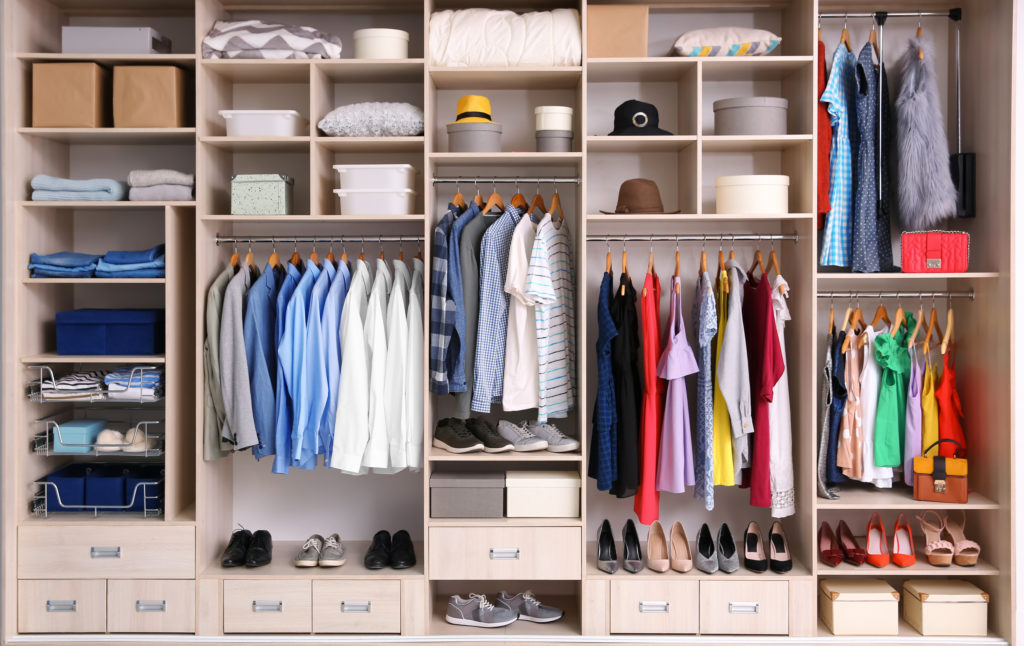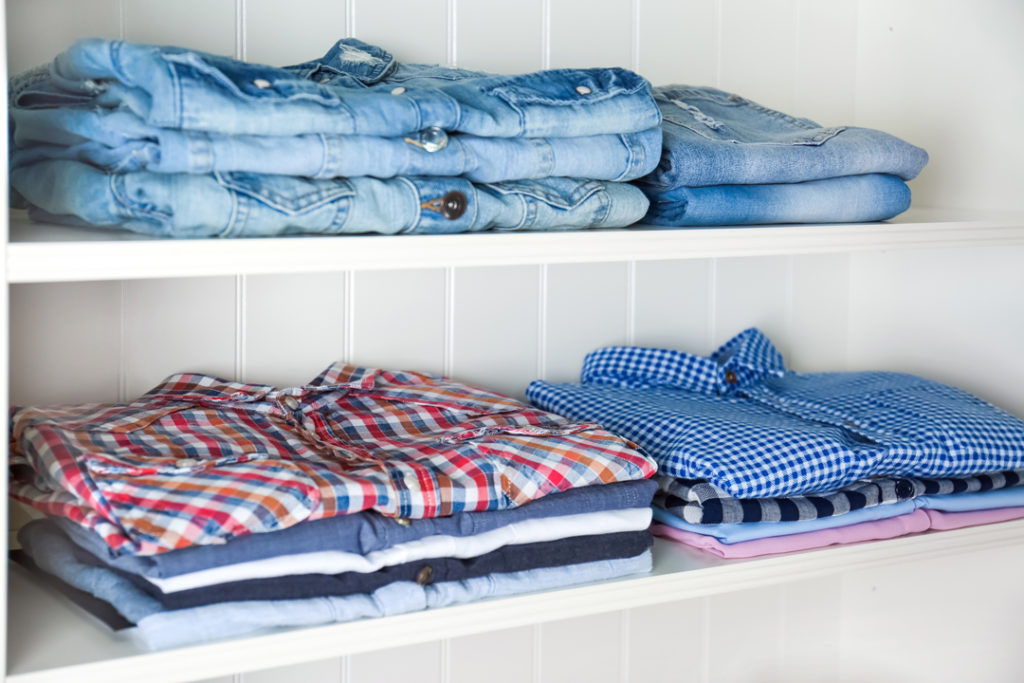No more wire hangers! Closet organization isn’t just about baskets and bins, shoe racks and, of course, ditching those wire hangers for something more cooperative. Sometimes you have to take it down to the studs and start from scratch.
Jared Keuntjes of Pro Closet Designs and PCD Manufacturing has been designing, building and installing custom closets in Ocala for 10 years. His closet organization process always starts with an interview with the customer, in their home, right in front of the closet in question—closet organization requires understanding just how much space you have and exactly what you hope to do with it.
Getting Started
 “Our goal is to get in the closet, see what they have and measure so we can understand the layout,” says Keuntjes. “But really it starts with talking with the customer about how they want to organize their clothes. If they’re building a brand-new home, they generally have an idea of what they want their closet to look like. Other people, when I walk in, say, ‘You’re the expert!’ Then you have to ask questions.”
“Our goal is to get in the closet, see what they have and measure so we can understand the layout,” says Keuntjes. “But really it starts with talking with the customer about how they want to organize their clothes. If they’re building a brand-new home, they generally have an idea of what they want their closet to look like. Other people, when I walk in, say, ‘You’re the expert!’ Then you have to ask questions.”
The questions Keuntjes asks of his customers are something every aspiring organizer should ask themselves before getting started.
“Do you hang your T-shirts or fold them? How much long hanging space do you need? How many purses and shoes do you have? Where do you plan on putting those items? Do you plan to have a chest of drawers or dresser in your bedroom, or do you want them all in your closet? Do you want to store your laundry hamper in there? Do you leave your shoes in the garage or do you keep them on shelves? Try to design to your needs so you’re not changing your game,” he explains.
Finding The Funds
With a store-bought closet organizing unit or the construction materials to build one, you’ll need to budget to pay for your closet makeover upfront.
By working with a design and installation company, you can often make payments over time. This can be especially helpful if you’re looking to make major improvements.
“We have term payments, which is a down payment and normally 50 percent, 40 percent and then 10 percent,” says Keuntjes. “Of course, we work with a company that offers standard financing options.”
Customizing The Common Closet
Custom closets may sound like they’re only for high-end homes, but Keuntjes’ company customizes closets of any size, for any budget. This means he’s quite familiar with the standard, two-doors-that-pull-apart closets in most homes, and making one of these more organized doesn’t require a large investment.
“Hang shoe racks on the back of the door if it’s not the folding type. Get baskets and bins to put your things in. An improvement could be something as simple as, if you have one wire rack in your closet, adding another to potentially double your hanging space,” says Keuntjes.
When designing custom units for these types of closets, Keuntjes has a few go-to layouts that provide as much room as possible since these non-walk-ins are already short on space.
“I look at how much hanging space they’re using, and I’ll put the hanging areas to the corners,” he explains. “I’m going to put a center unit—either a drawer stack or shelf stack—right in the middle, and double hanging areas on both sides, or a single hanging area on one side with a hamper unit or hamper-drawer combo on the other.”
Spending A Little
Building a better closet doesn’t have to cost a fortune. The important part is sourcing your materials.
“If someone says they want to spend under $1,200 on a project, there’s all different ways to do that,” says Keuntjes. “Our company offers some pretty affordable suspended units; suspended units save on material costs. It’s stronger than wire so you’ll get a higher-end look and better use. Even for DIYers, you can come pick up your materials from us and design it with us, cut it here, then install it yourself.”
 Purchasing materials and installation from a company offers some additional peace of mind if you’re not comfortable with a project of this scale.
Purchasing materials and installation from a company offers some additional peace of mind if you’re not comfortable with a project of this scale.
“If you go through a company that offers a lifetime warranty on the product, you can be comfortable knowing you have a high-end product. Then you don’t have your wire rack falling down off the wall and you think it’s someone breaking in in the middle of the night,” Keuntjes laughs.
If you want to try a new organizational layout in your closet, know that you’re not stuck with the wire racks for sale at Home Depot. Keuntjes’ biggest piece of advice is to buy materials locally—well-made materials will ensure the upgrade you’ve sunk your money into lasts for years to come.
“The No. 1 thing that comes to mind is that foreign products can be cheap. It’s bought in bulk, and it’s just not going to give you quality. We’re using American products whenever we can get our hands on them. Also, a lot of people look at stuff to buy in the big box stores, but it won’t fit in their closet exactly. When you see CAD drawings done by a professional, that spacing will be exact because everything is cut by us and installed correctly.”
Spending A Lot
If you’ve budgeted for your dream closet, be sure to consider every possible feature you want in the finished product. Consulting a professional may reveal some options you didn’t know existed or some touches that add a polished, luxury look.
“We’ve done encased units with glass. We do a lot of doors in front of the clothing and crown molding. We really can build out entire rooms for closets with a spot for everything, like drawers with jewelry trays for collectors. We do a lot of strip and top lighting to accent different areas.”
In those built-out, room-sized closets, drawer units can be built as an island in the center of the closet and topped with granite. Closets of this size may even have some room to go above and beyond a closet’s usual purpose.
“We’ve done hidden rooms with another room within a closet, whether it’s for a safe room or a place for gun safes, or simply a room where the homeowner has their jewelry and high-end items in case of a robbery. We’ve hidden safes in the closet so you can’t see it, but it’s there,” says Keuntjes.






